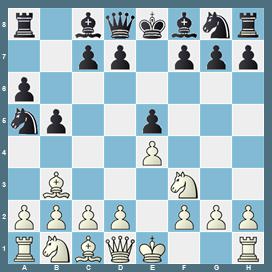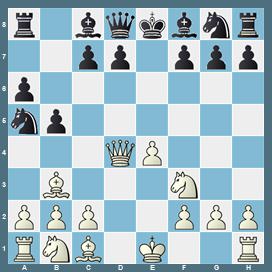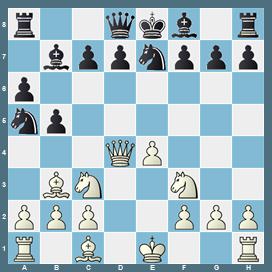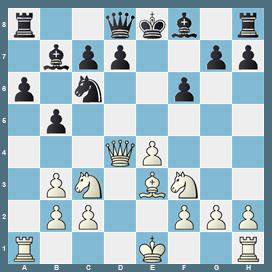The Slovakian Grandmaster Igor Stohl puts a sideline of the Ruy Lopez which has recently become popular at the top level under the microscope: 1.e4 e5 2.Nf3 Nc6 3.Bb5 a6 4.Ba4 b5 5.Bb3 Na5!?

The so-called Norwegian Variation - the second player radically expands on the queenside and gets ready to liquidate the enemy light-squared bishop, their most precious minor piece in the Ruy Lopez. The price for this is that Black falls behind in development. 6.d4. (Another main continuation is 6.0-0 d6 7.d4, when Black has the choice between opening the position with 7...exd4 and the more restrained 7...Nxb3 8.axb3 f6. Instead, the immediate strike 6.Bxf7+?! Kxf7 7.Nxe5+ Ke7, mainly used in blitz or rapid chess, might look dangerous, but objectively does not offer White sufficient compensation.) 6...exd4 7.Qxd4.

White centralises the queen, retaining the option to castle long. 7...Bb7 (the most flexible) 8.Nc3 Ne7.

This knight move was recommended by Mihail Marin in his opening video in CBM 217 featuring the game Puranik-Carlsen, Doha 2023 in which the Norwegian played 8...d6 instead. Now Rohrer,C - Peng,L 0-1 continued 9.Bg5 (perhaps 9.0-0 is best after all) f6 10.Be3 and here the simple 10...Nxb3 11.axb3 Nc6

followed by ...Bb4 and ...0-0 would have given Black a very decent game.
"In general the Norwegian Ruy Lopez seems to be a viable sideline, with Black holding the (sometimes rather uneasy) balance in most branches. However, you need to be well prepared and tactically fully alert! As even our stem game shows, White's lead in development often promises combinational opportunities." - Igor Stohl.